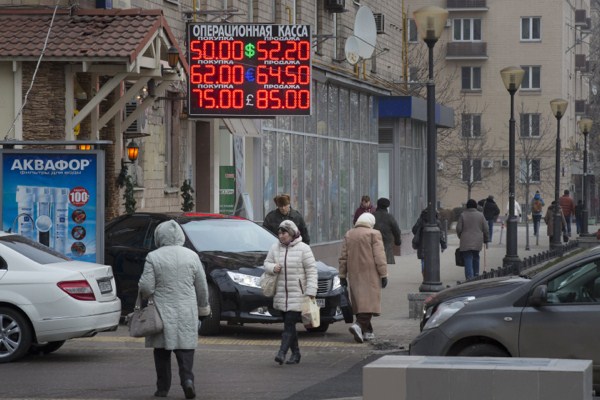December has been a brutal month for the Russian economy. On Dec. 1, the value of the ruble, already at a historic low, experienced its steepest one-day drop since the 1998 financial crisis. The exchange rate with the dollar remains high, and there are no signs of improvement in a slide that has seen the Russian currency lose over 40 percent of its value since the beginning of the year. On the same day, the Ministry of Economic Development announced that Russia would be in recession through at least 2015; quickly chastised by the Kremlin, the ministry removed the offending figures from its website. And earlier this month, Russian President Vladimir Putin announced the cancellation of the South Stream pipeline, a long-planned multibillion-dollar project to bring Russian gas to Southern Europe and augment the influence Russia wields over Europe through energy.
While the immediate cause of Russia’s economic troubles is the rapidly falling price of oil, Russia’s ability to respond has been handicapped by Western sanctions punishing Moscow for its annexation of Crimea and ongoing military intervention in Ukraine. In Ukraine, Putin gambled that the political benefits of a belligerent foreign policy would outweigh the economic costs. But he now appears to have gotten that gamble very wrong, and both Russia and his regime are weaker as a result.
In the months after the annexation of Crimea, Putin’s approval ratings soared as high as 88 percent; the percentage of Russians who thought their country was headed in the right direction took a similar jump. Russia’s destabilization of Ukraine also allowed the Kremlin’s newly expanded propaganda machine to send a clear message to those Russians who might otherwise be inspired by the Euromaidan movement: The result is not dignity and democracy triumphing over a corrupt regime, but rather chaos and violence.

